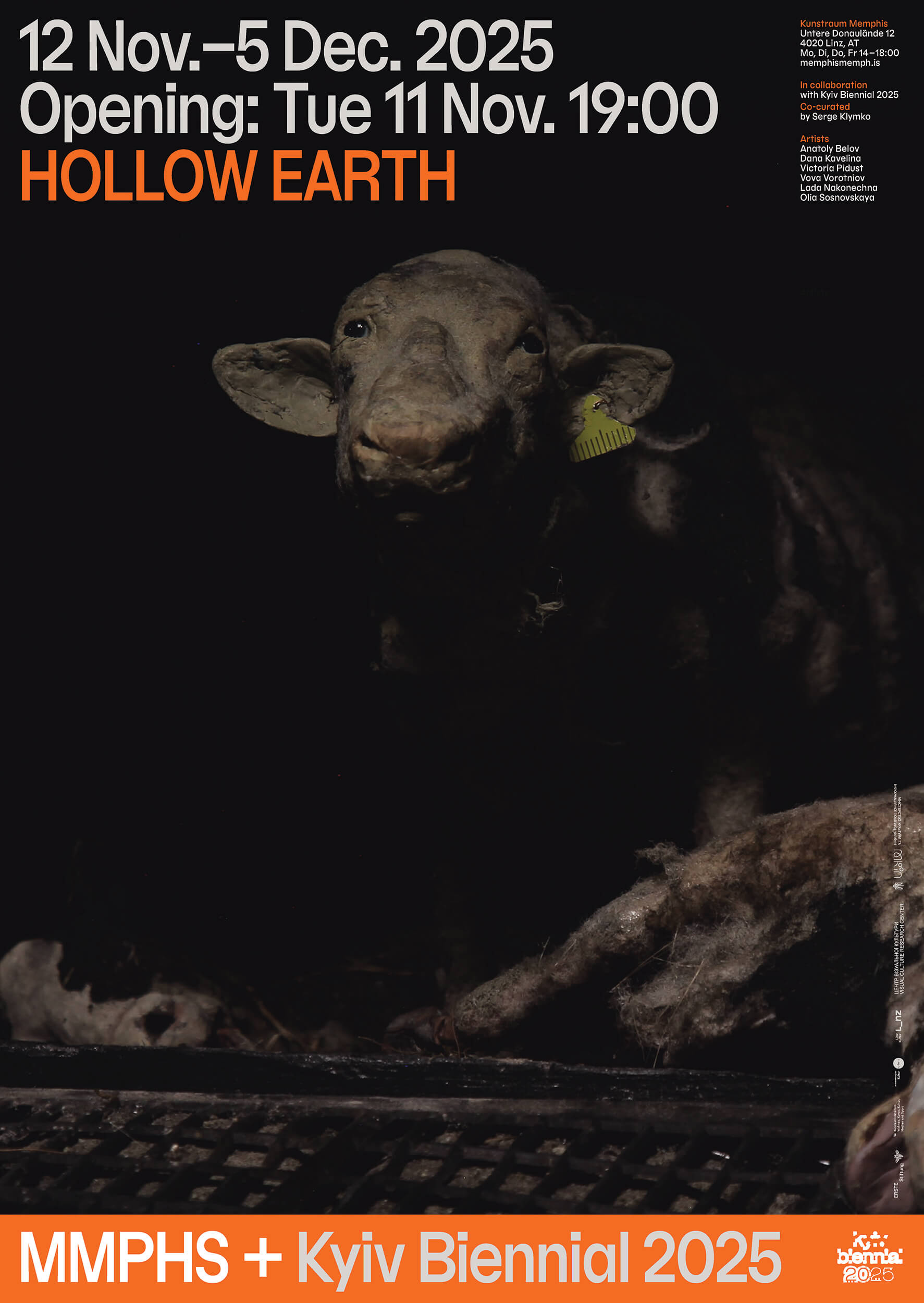If only, you know, there was still some kind of land left. Otherwise, before returning, they will just completely dismantle this country for mineral resources, for minerals, you know, for all this resource. You'll have the land, but there'll be no soil, no minerals, nothing. Everything is dead...
(PVT Mineral, Grey Earth)
The exhibition Hollow Earth examines the transformed visual and physical landscape of war. The works navigate through a reality in which the human body and its habitat exist in a state of profound fragility. They operate at the perceptual intersection of warfare, technology, and the organic world. The exhibition draws its central anxiety from a line in a film by one of the participating artists: the fear that the land itself will be utterly dismantled – leaving behind an emptied earth, stripped of soil, minerals, and life.
For an agrarian country on the frontline, the landscape on takes on a special meaning – it becomes a stage where the traditional “circle of life” accelerates to an enormous, distorting pace. The landscape, full of bodies, comes to life and hybridizes on the threshold between life and death. What was once solid and straight now trembles and oscillates; linearity stretches like an overstressed string. Form is questioned – war deforms both the material and the immaterial. It also reshapes memory and perception. Like an object with a powerful gravitational pull, it is able to warp time and space.
This project is a collaboration between Lentos Kunstmuseum Linz, Kunstraum Memphis, Kyiv Biennial and tranzit.at. Funded by the Federal Ministry for Housing, Art, Culture, Media and Sport, ERSTE Foundation, the DAAD Artists-in-Berlin Program with funds from the German Federal Foreign Office (AA) and RIBBON International.
Anatoly Belov
Dana Kavelina
Lada Nakonechna
Viktoria Pidust
Vova Vorotniov
Olia Sosnovskaya






